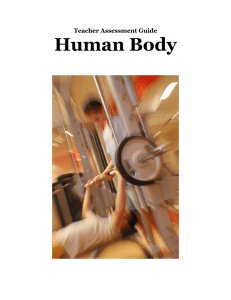Document 15650142
advertisement
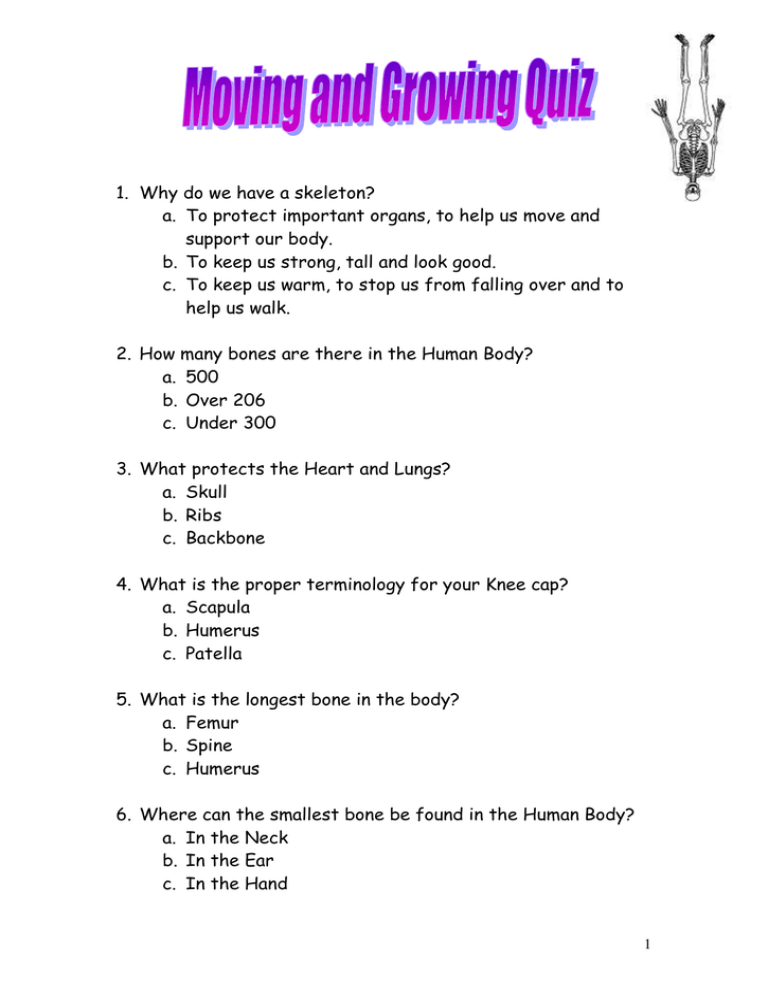
1. Why do we have a skeleton? a. To protect important organs, to help us move and support our body. b. To keep us strong, tall and look good. c. To keep us warm, to stop us from falling over and to help us walk. 2. How many bones are there in the Human Body? a. 500 b. Over 206 c. Under 300 3. What protects the Heart and Lungs? a. Skull b. Ribs c. Backbone 4. What is the proper terminology for your Knee cap? a. Scapula b. Humerus c. Patella 5. What is the longest bone in the body? a. Femur b. Spine c. Humerus 6. Where can the smallest bone be found in the Human Body? a. In the Neck b. In the Ear c. In the Hand 1 7. Bones are connected to… a. Skin b. Joints c. Veins 8. Bones are made of… a. Calcium, protein and minerals b. Sugar, blood, minerals c. Protein, carbohydrates, salt 9. When a bone breaks it is called a … a. Crack b. Cut c. Fracture 10. Animals that do not have a backbone are called... a. Vertebrates b. Invertebrates c. Convertebrates 11. Which of these animals has its skeleton on the outside of its body? a. Ant b. Horse c. Fish 12. Which of these animals does not have a hard skeleton? a. Cat b. Crab c. Earthworm 13. As you grow, your skeleton... a. Grows b. Stays the same size c. Gets smaller 2 14. How many muscles are there in the body? a. 500 b. Over 600 c. Under 120 15. How does your arm bend up and down? a. The bones inside your arm move on their own b. Your elbow squeezes and moves the bones c. Muscles pull the bones up and down 16. Your muscles work hardest when you are... a. Running b. Walking c. Sitting down 17. Muscles always… a. Work hard b. Work in pairs c. Work slowly 18. When a muscle pulls it… a. Gets longer b. Contracts (gets shorter) c. Stays the same 19. When a muscle is contracting, the other is … a. Relaxing b. Sleeping c. Tightening 20. We have muscles to help our bodies… a. Look good 3 a. Slide b. Move 4

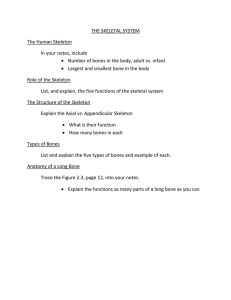

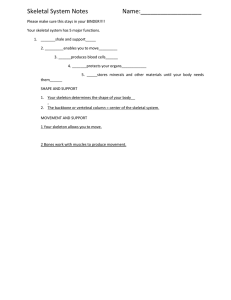

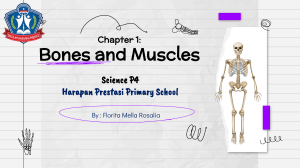
![3.5.3 Responses in the Human [C] Musculoskeletal System Objectives](http://s2.studylib.net/store/data/017585824_1-138614069b34daa80cd8340e13f90739-300x300.png)
